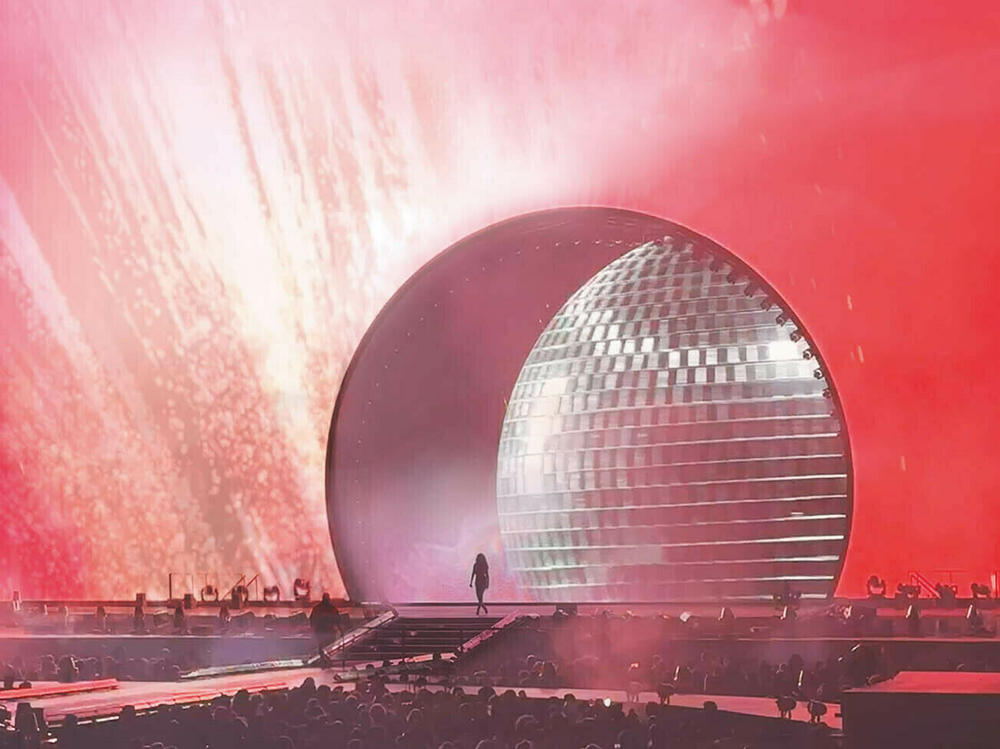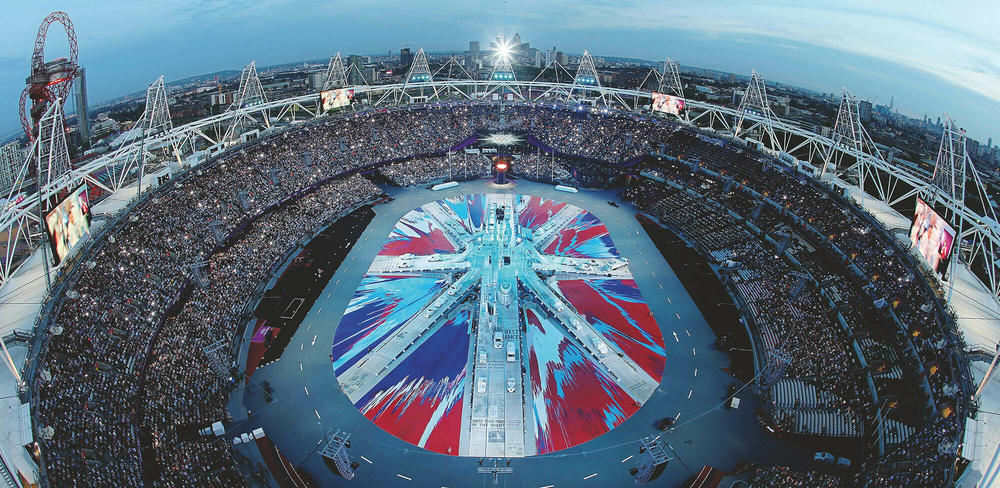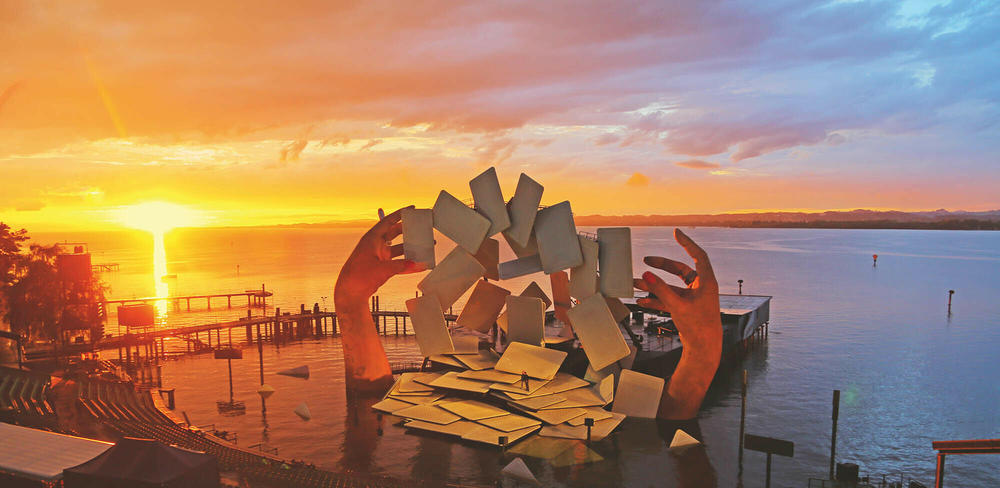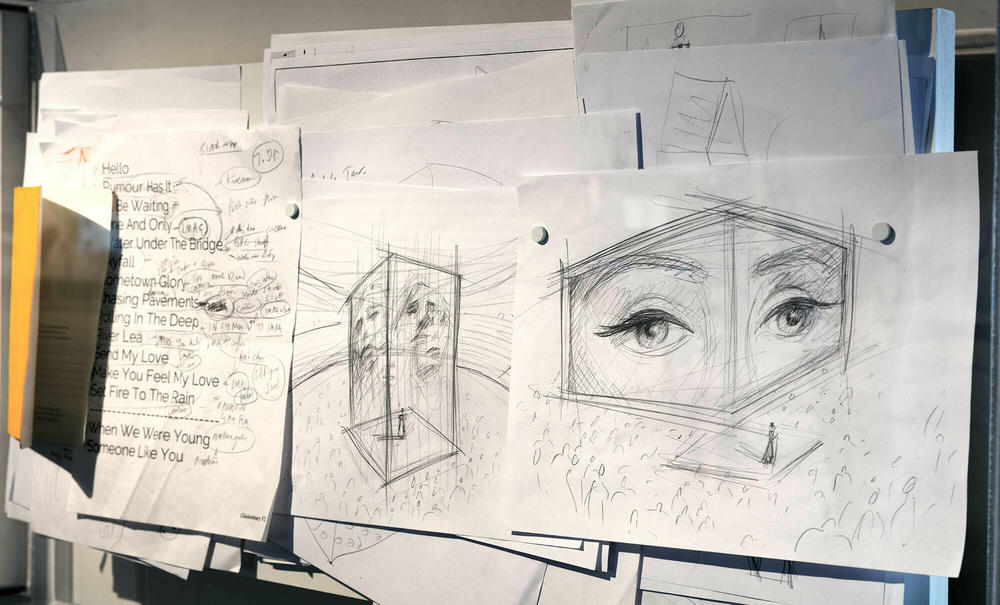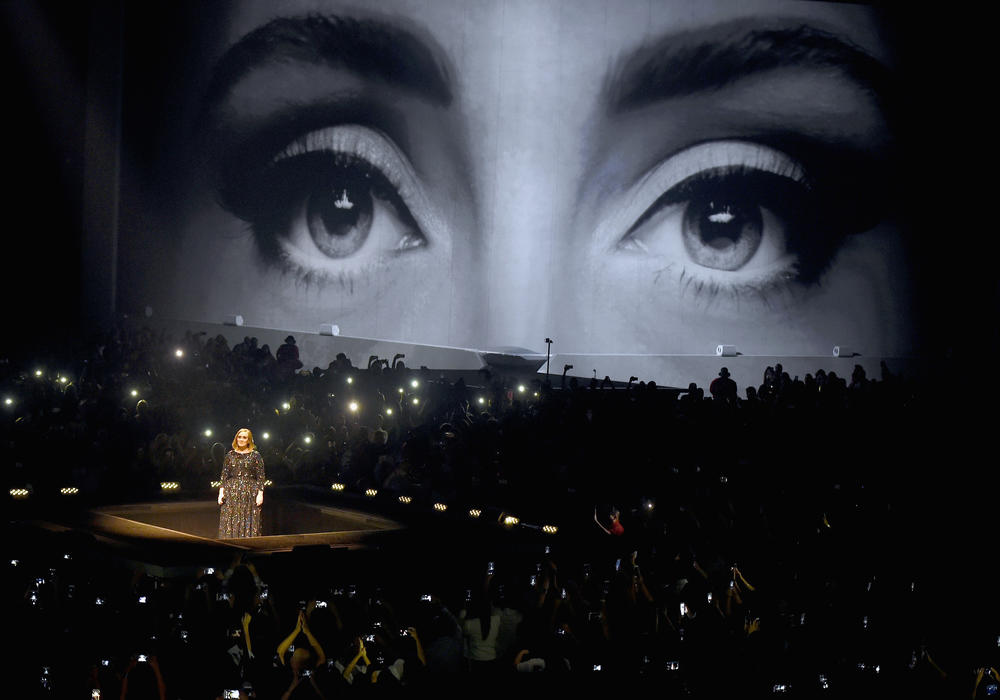Section Branding
Header Content
When stars are on stage, this designer makes it personal for each fan in the stadium
Primary Content
In the post-pandemic fervor for live music, stadium concerts have shattered records. But for British stage designer Es Devlin, who has crafted some of the most acclaimed pop spectacles in recent years including Beyoncé's Renaissance tour, stadiums have never been a natural habitat for music. "They were designed for gladiatorial combat ... [and] competition, not for communal ritual gatherings."
Devlin's commitment to elevating those gatherings has been the driving force of a career that has spanned opera, theater and yes, stadium extravaganzas such as the Closing Ceremony for the 2012 London Olympics and two Super Bowl halftime shows.
The new book An Atlas of Es Devlin, edited by Andrea Lipps who curated the accompanying exhibition at the Cooper Hewitt, Smithsonian Design Museum, brings together three decades of her draft sketches, completed stages and creative philosophy.
U2, The Weeknd, Kanye West, Adele, and Beyoncé are just some of the artists who have commissioned Devlin to create physical forms for their large-scale tours. Devlin has transcended the structural limitations of the stadium show with spell-binding designs that have earned her a reputation as one of the most innovative visual artists in music.
Merging cutting-edge technology, video projections and lighting sculptures, Devlin has brought the intimacy and drama of British theater where she began her career to the impersonal scale of stadium tours. "An opera gets the same amount of rigor and attention to detail as a pop concert because why shouldn't those audiences get the same level of intellect and thinking to any of what might be considered high culture," Lipps says.
Devlin doesn't think in those distinctions either but rather in the ratio of people to space. She compares a large venue to a saucepan – her job is to "turn up the heat and pressurize the cooker." Big stadium spaces "invite a designer to introduce a lid," she explains. "It's quite a simple equation: How can I add an element to achieve a boiling point?"
Sarah Medford profiled Devlin for WSJ. magazine and adds that instead of technologically overwhelming audiences, whether it's in a stadium or the stage, Devlin's designs often tend to be deceptively austere and abstract. "It's reductive, but the idea of putting a whole world into something as simple as a cube, or a set of stairs. She uses a simple form that can then become more complicated through how she uses it."
For director Sam Mendes' Tony Award-winning production of The Lehman Trilogy, Devlin placed the three lead actors inside a revolving glass cube surrounded by lush projections that echoed the play's account of financial history. Arifa Akbar, chief theater critic for The Guardian in London, adds "Her sets are dominated by one thing, so when we think about The Lehman Trilogy, it's those revolving rooms. It's not elaborate and doesn't have endless bells and whistles, it seems like a beguiling simplicity. Her designs are very sculptural and quite magnificent, but they don't eclipse the play are ultimately in service to the ideas."
Es Devlin describes her designs for stages as kinetic sculptures and her interpretation of a theme at the heart of a performance. For Beyoncé's Renaissance tour, Devlin created a massive cinema screen perforated by a spherical portal – a 50-foot wide aperture – from which the real star, her dancers and musicians could emerge and withdraw between songs. As with many of Devlin's large-scale stadium designs, the interplay of animated video sequences, live-projections merged with the real human audiences had come to see. It resolved the structural challenge of such vastness by creating a visible and immersive world for every member of the audience, but also for Beyoncé, a majestic template to unveil her cinematic Renaissance.
Devlin says that tour, as with so many projects, is truly born of a collaboration with fellow visual artists." I have yet to meet a recording artist who is not a visual artist. They are synesthetic people who see their music, as much as they hear it." On a similar note, Devlin recalls meeting Adele as she was preparing to release her album 25 and embark on her first world tour.
"Adele was very generous to play me the song 'Hello' in my studio in Peckham, and she hadn't performed for about five years. She imagined herself asleep and we filmed her eyes asleep and at the moment that she rose up on a lift to greet the audience, and say hello, the eyes opened wide and that was the start of the show."
An Atlas of Es Devlin is a cartography of Devlin's entire three-decade career. It's a limited-edition book with pop-up features that include blueprints, sketches, fold-out iterations of abandoned designs and lush photographs of completed stages across the world. The accompanying exhibition at the Cooper Hewitt, Smithsonian Design Museum includes scale models and film clips from some of her most monumental works. The show and book are united by a three-dimensional sculptural form called the Iris. It's a series of concentric circles and overlapping layers lined with the names of all of Devlin's collaborators across her projects. The layers form a narrowing aperture that conclude with a Venn diagram image of Devlin, an ode to the many points of view that must align to find a shared perspective to achieve a final form.
The show also includes many of Devlin's own artworks, sound and sculptural installations composed by her collaborators Jade Pybus and Andy Theakstone. Many of these works foreground her own most pressing concerns for the environment, natural preservation and global interconnectedness. That said, she acknowledges there can be cognitive dissonance in reconciling her environmental concerns with being a part of a massive touring industry she's helped flourish.
"The 75 trucks that carry around a pop concert are obviously huge. The cars that take 100,000 people out to the stadium and back home from the stadium are huge." Devlin says studies are underway to explore how to reduce carbon emissions and streamline productions but she says there is something sacred in communal gathering that can't be replaced. "As we make our behavioral shifts, choices are going to have to be made," she says. "But I would want to sustain a world where we still can gather in large groups. I think it's very important for our civilization that we can gather as 100,000 people and sing together. I think it's one of the things that makes us human so on the list of the things I would sacrifice, that would be quite low down the list."
Copyright 2023 NPR. To see more, visit https://www.npr.org.
